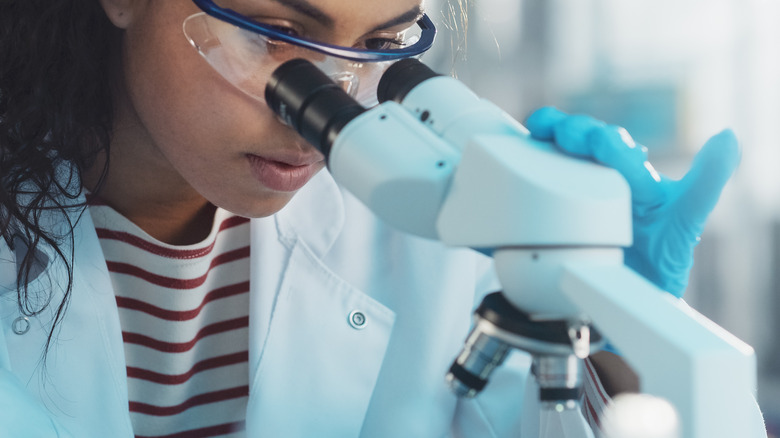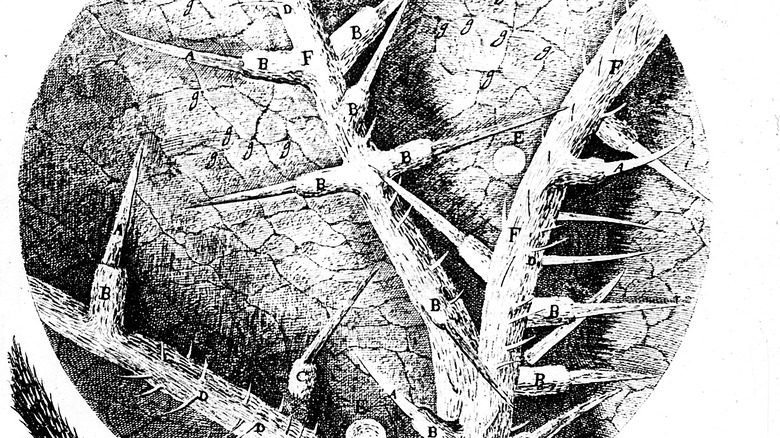Who Invented The Microscope?
Inventions that change everything are pretty rare. So, the question of who invented the microscope is one that requires a closer look. What is clear is that the first models emerged in the Netherlands at the turn of the 17th century, as Live Science reports. There are two main contenders for the invention of the first microscope: telescope inventor Hans Lippershey or father-son duo Hans and Zacharias Janssen. All three men lived in the city of Middelburg during the Dutch Golden Age. Lippershey was a lens crafter from Germany who made eyeglasses and binoculars and filed the first patent for a telescope. He is also credited with making early microscopes as well.
However, the Janssens have a slightly stronger claim because of a letter Dutch diplomat William Boreel wrote to the king of France's doctor in the 1650s. In the letter, Boreel reportedly said that Zacharias Janssen first wrote to him about a microscope in the 1590s. Since Zacharias was a teenager at the time, historians assume his father, Hans Janssen, was in on the invention.
The Janssens' early microscope was very different from the models used today, however. They were compound microscopes, meaning they were created by putting a lens at the top and bottom of a tube, according to Smithsonian Magazine. They could only magnify things by three to nine times, and there was no way to improve resolution, so magnified objects appeared blurry. Because of this, the earliest microscopes did not lead to any big scientific discoveries.
The image resolution improves
Microscope technology really leveled up about 100 years later. In 1676, Dutchman Antonie van Leeuwenhoek was inspired to improve the microscope in order to get a better look at the textiles he sold, according to Smithsonian Magazine. His microscopes had single, hand-ground lenses, as London's Science Museum notes. However, his lenses were of such high quality that his microscopes could magnify things by a factor of up to 200. This was enough magnification to unlock a whole new world. Leeuwenhoek accidentally discovered bacteria in 1676 and observed human sperm for the first time in 1677, according to Smithsonian Magazine.
Another early microscope pioneer was English scientist Robert Hooke. He published a book called "Micrographia" in 1665, which was the first work of microscopy, according to the British Library. In it, he included illustrations of items he had observed under a microscope of his own design. He displayed examinations of a piece of moss, an ant, and a flea, to name a few. He also was the first person to use the term "cell" to refer to tiny divisions in a plant, according to Smithsonian Magazine. Hooke used the word because the divisions reminded him of the small rooms in a monastery, and he is now known as the father of cellular biology.

